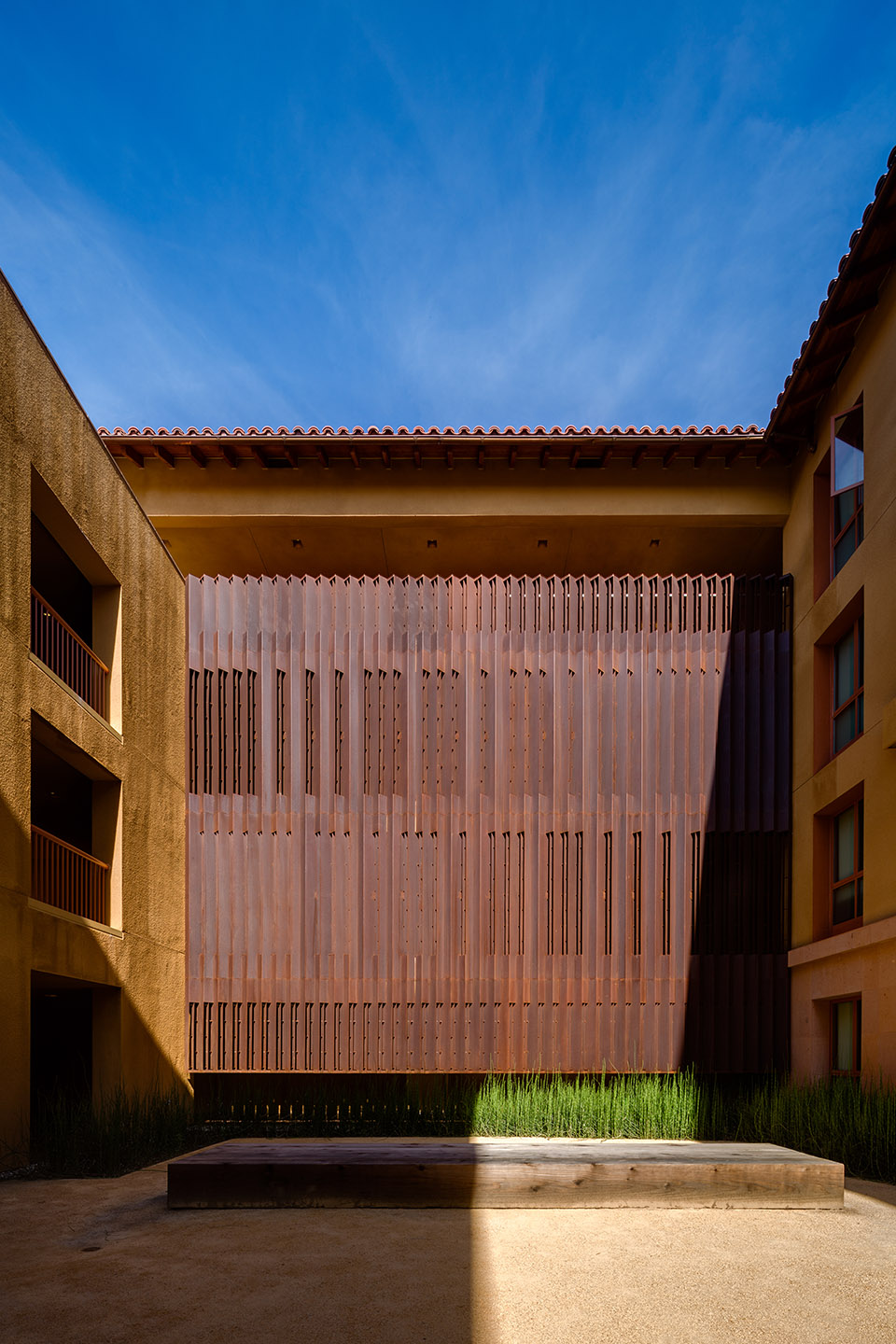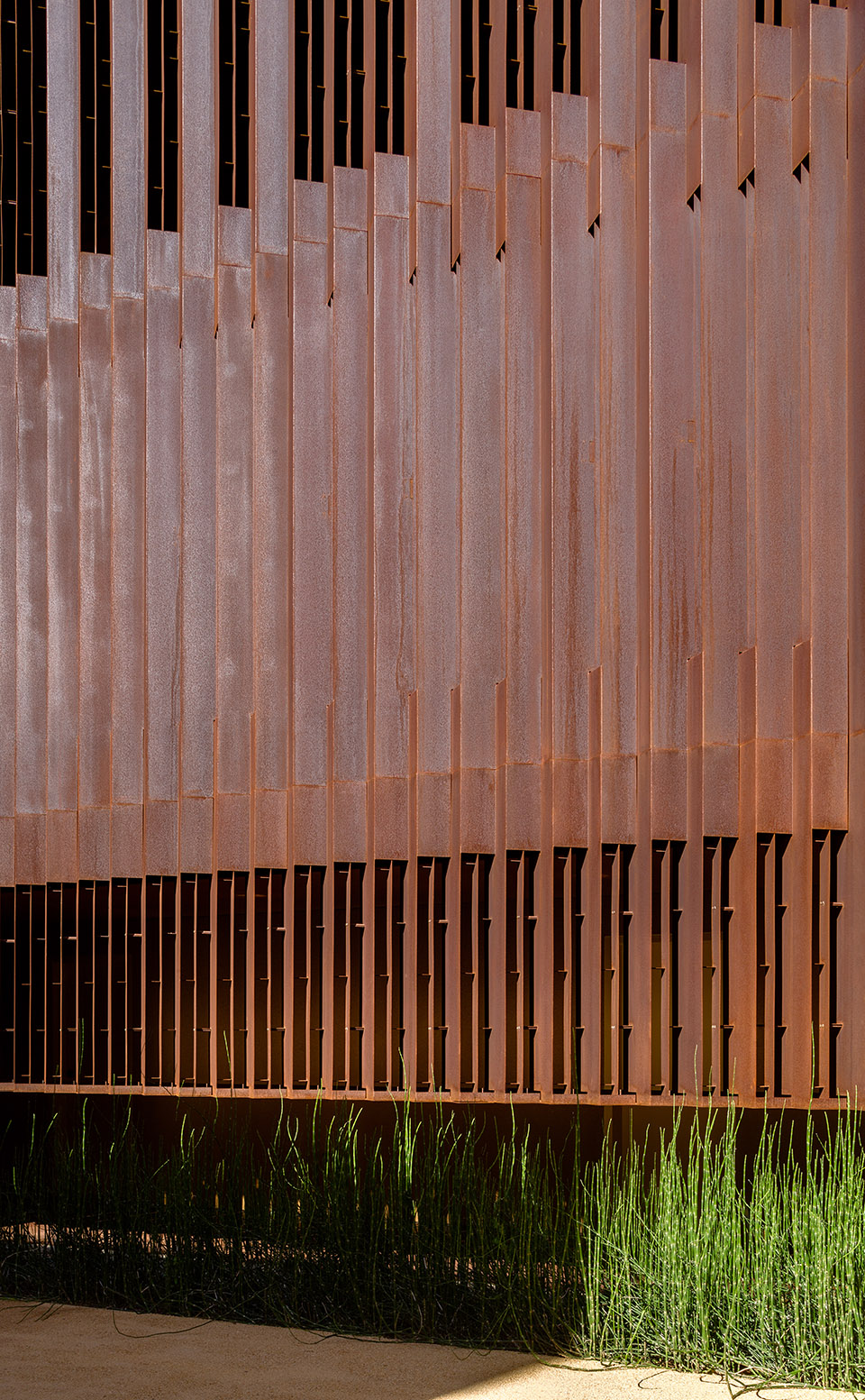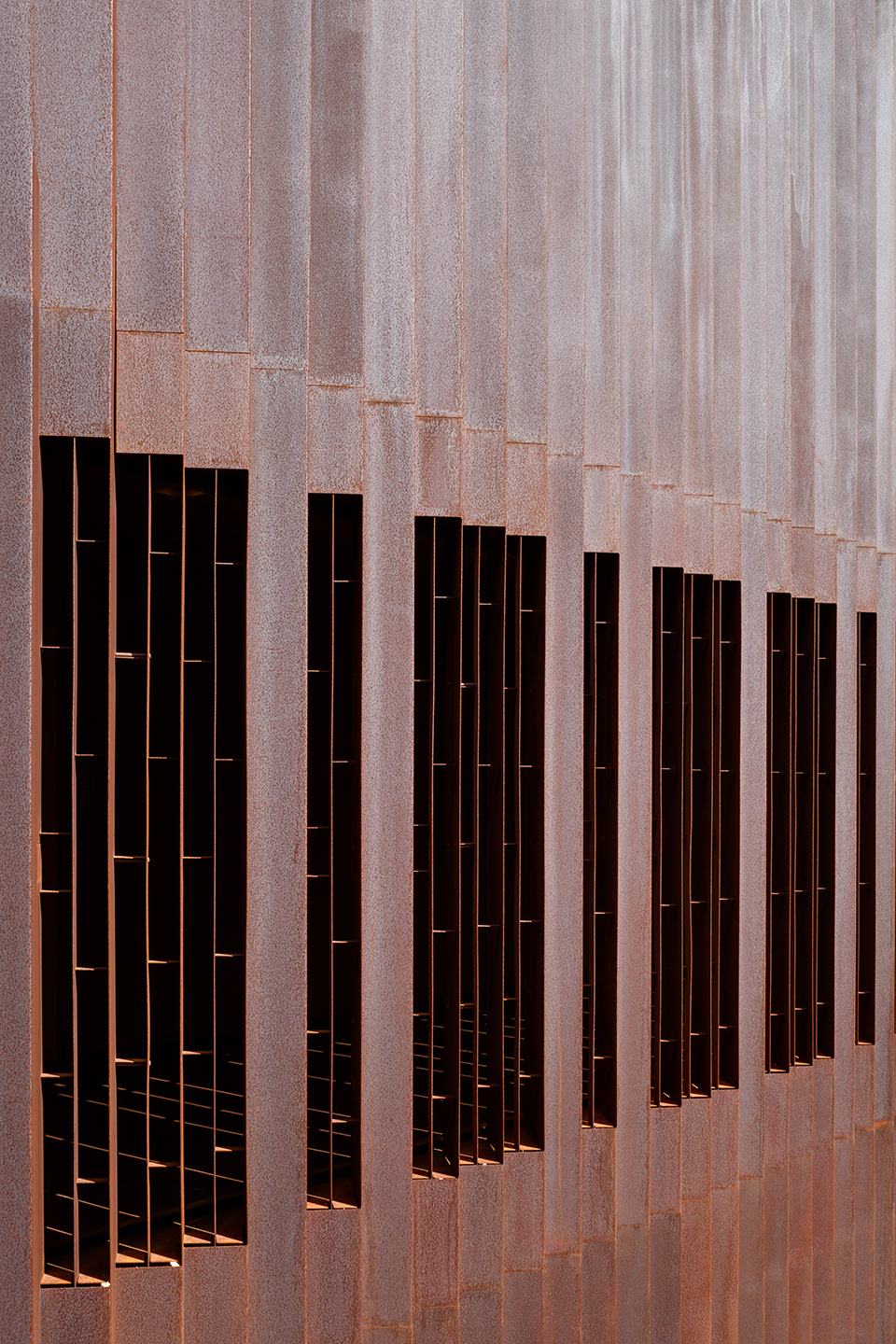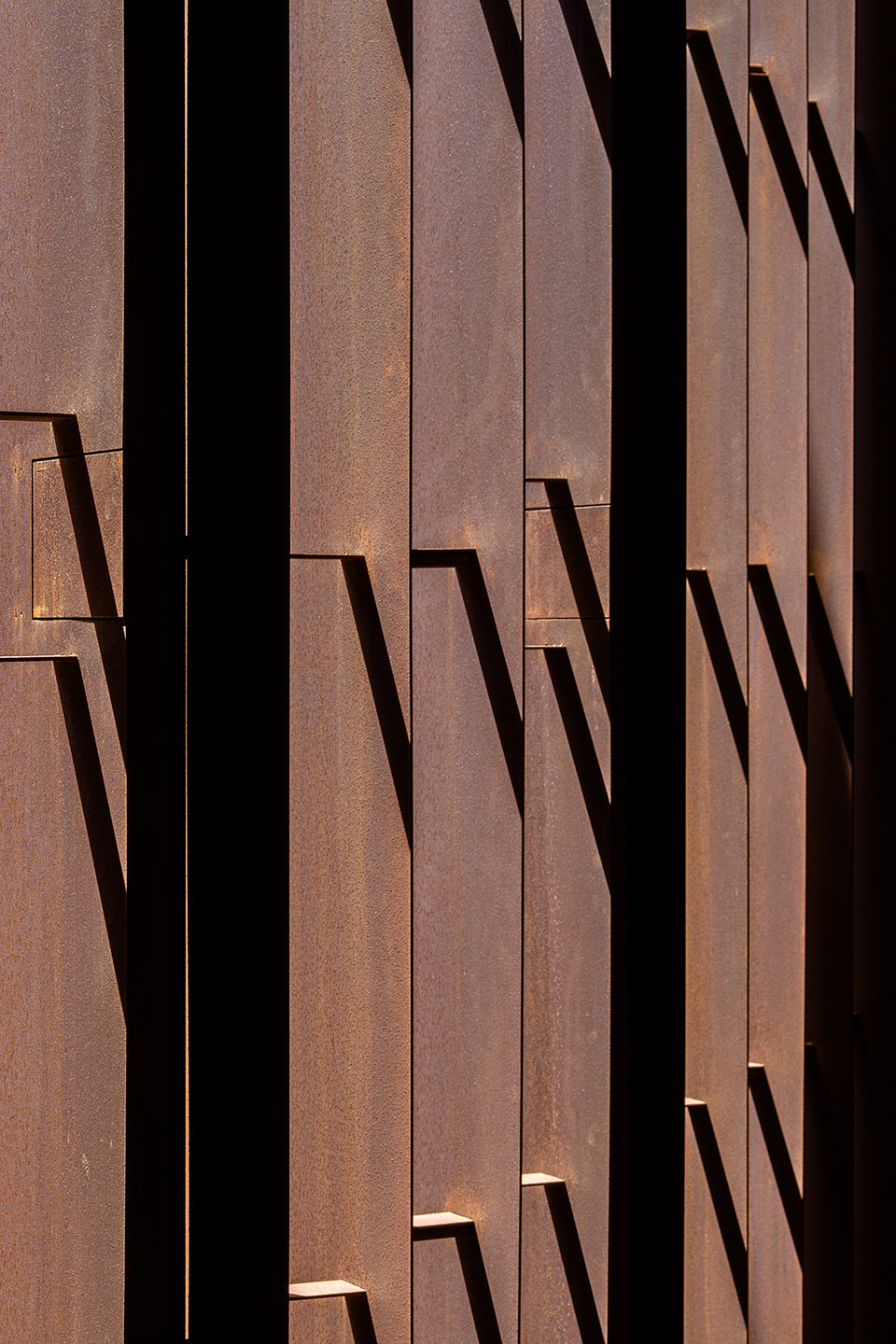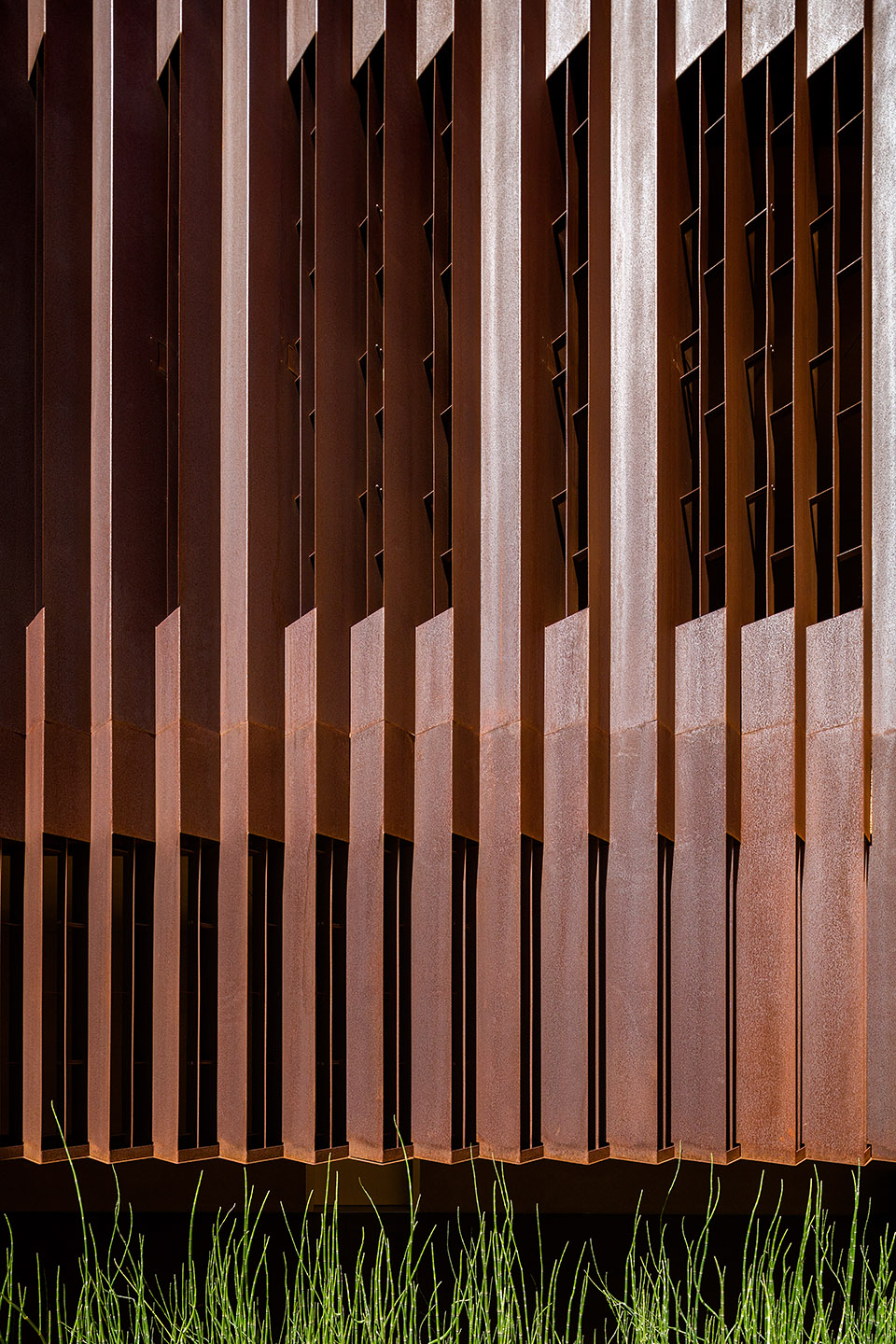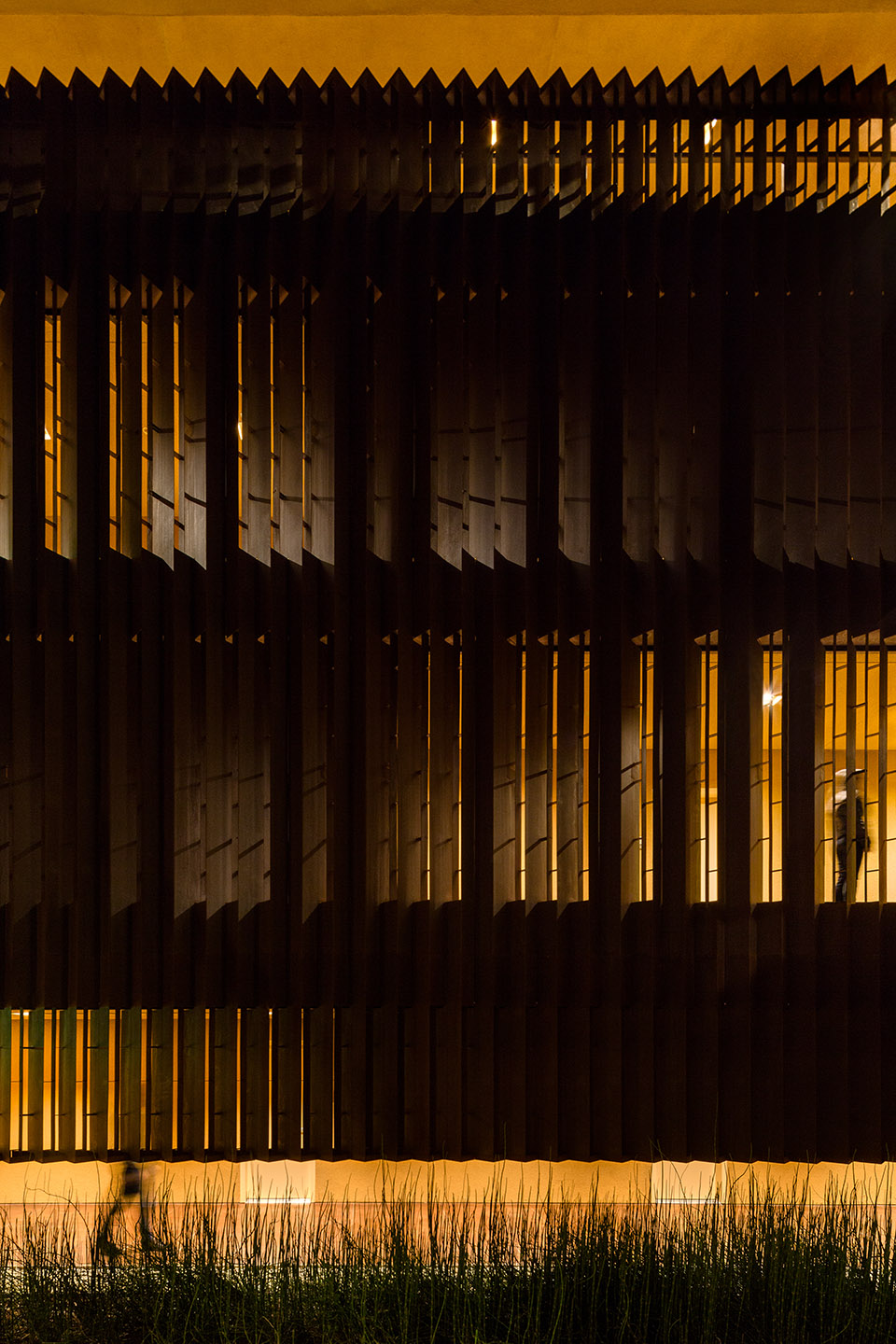这件由斯坦福大学委托设计的艺术装置包含了一个带有可移动部件的金属屏幕,在被激活时能够产生旋律。
This art installation, commissioned by Stanford University, is a metallic screen with moving elements that produce a melodic sound when activated.
▼装置概览,installation
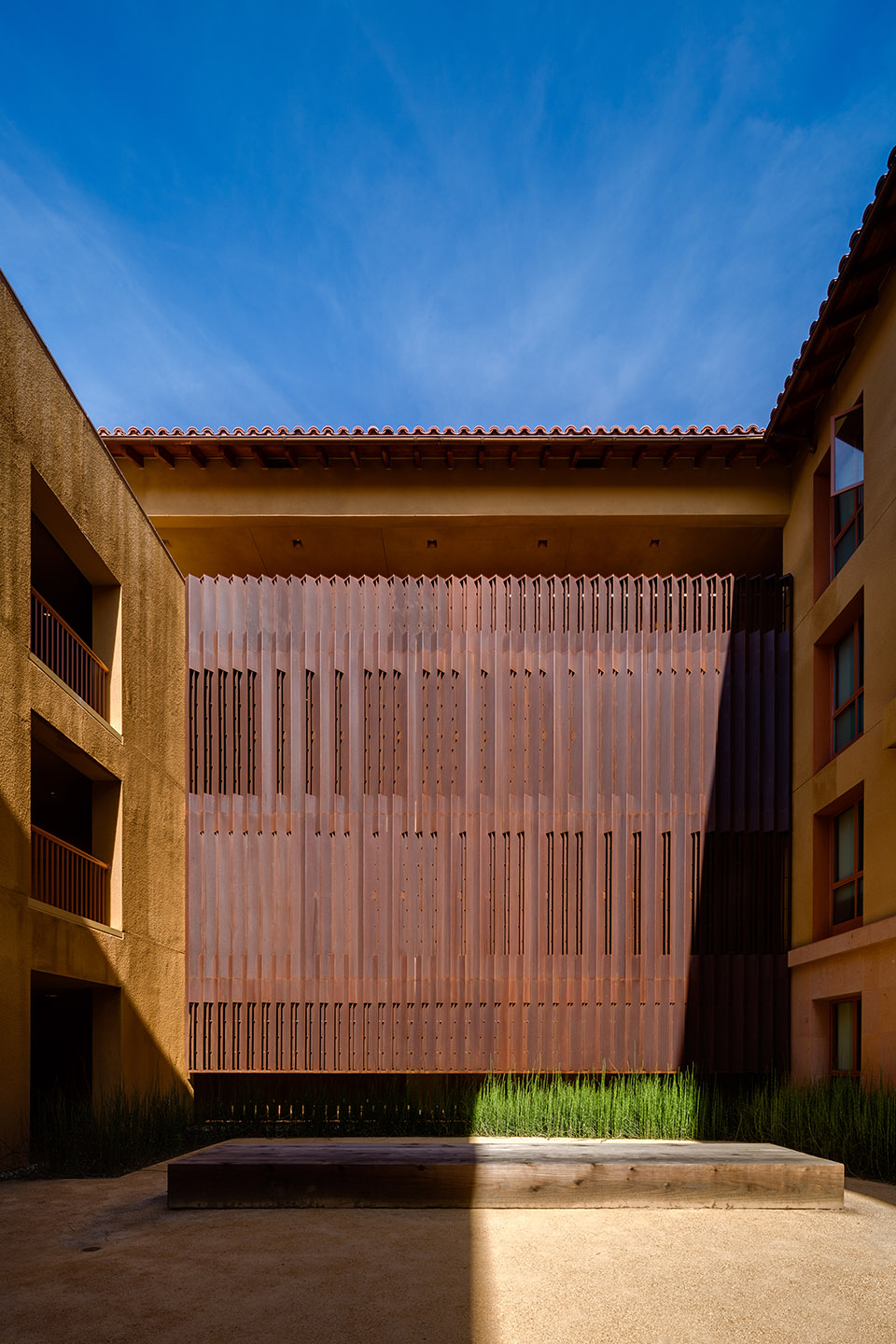
装置的名称“超短时空下的超短空间”取自詹姆斯·乔伊斯所著的《尤利西斯》的第三章内容。他在该章描绘了Stephen在海滩上漫步时对于现实真谛的顿悟。首先,他注意到了所有可以看见的事物,并由此认知到光线以及透明与不透明的事物。不透明的事物,实体的材料,可以通过触摸来验证。他闭上双眼想象着对面的事物,如同能够看见它一样,它是一种有节奏的、连续的、带来悦耳旋律的事物。
The title, “A very short space of time through very short times of space” is direct a quote from the first paragraph of the third chapter of James Joyce’s Ulysses. In it, Joyce describes Stephen experienceing an epiphany about reality as he walks on the beach. First, he notices everything that is visible and speculates about the light, the diaphanous and the opaque. The opaque — the material — is verifiable through touch: “knocking ones sconce against it”. He closes his eyes and thinks about what is opposite, and therefore simultaneous to the visual; it is the rhythmic, the sequential, the musical.
▼金属屏幕在被激活时能够产生旋律, a metallic screen with moving elements that produce a melodic sound when activated
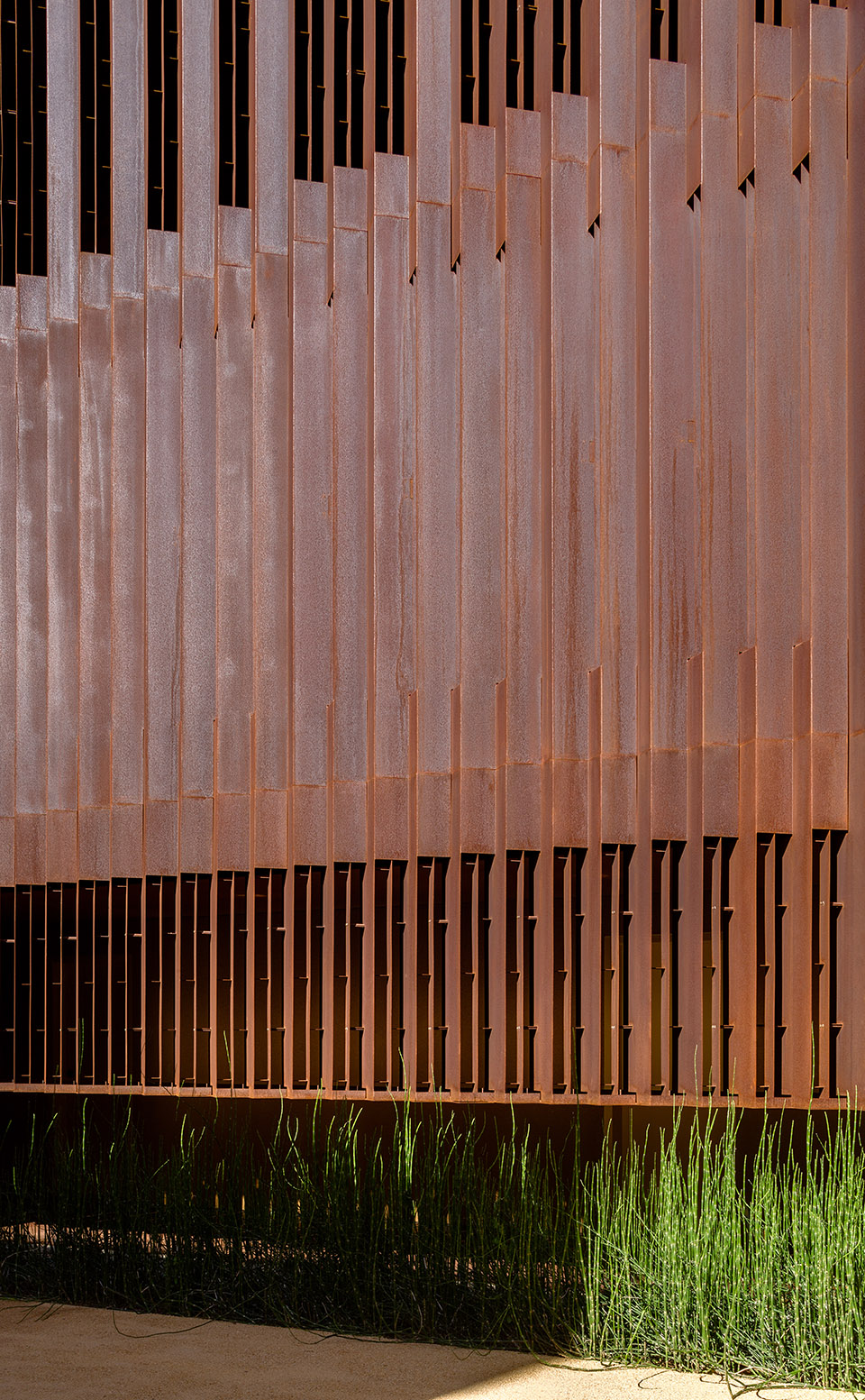
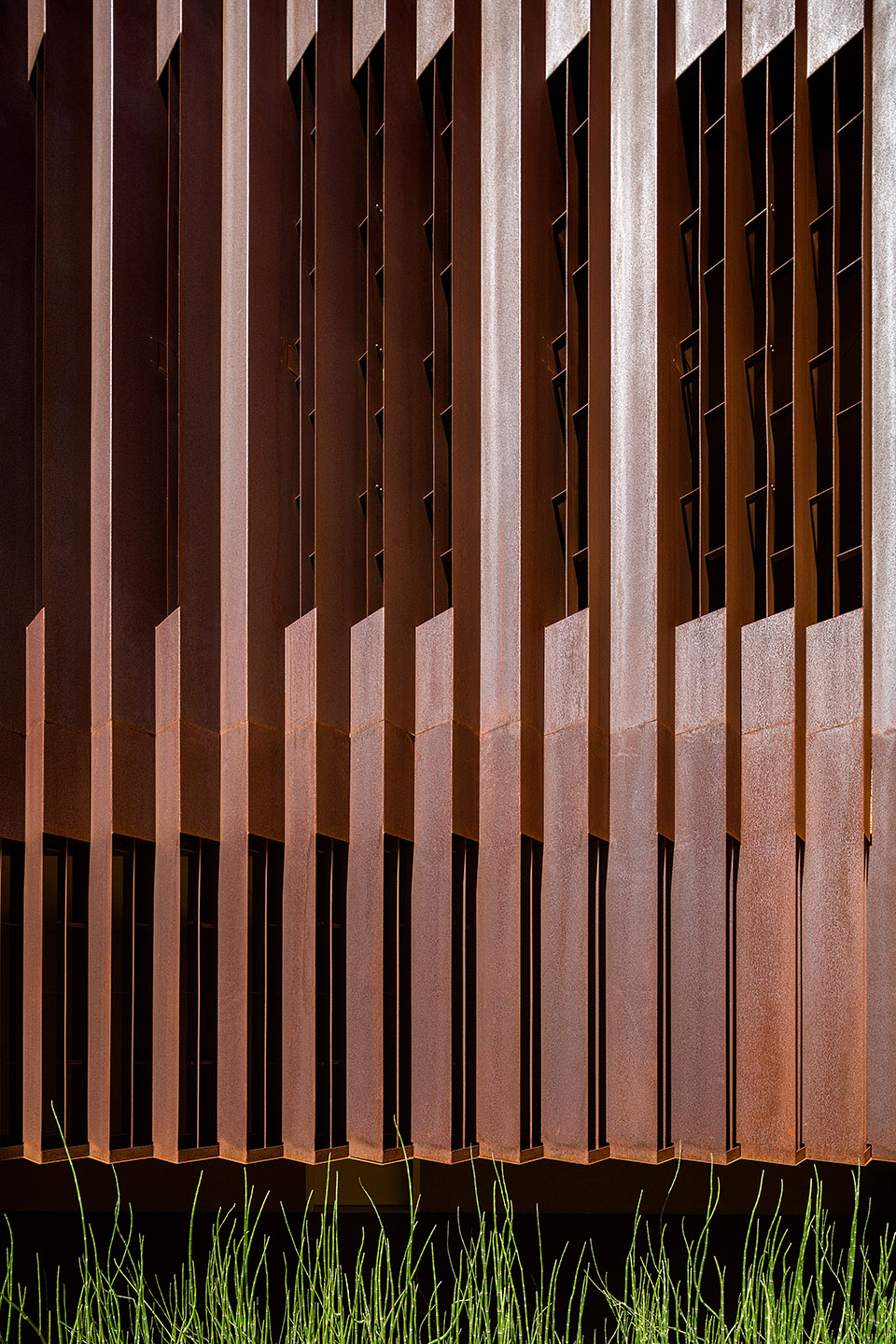
▼屏墙细部,detailed view
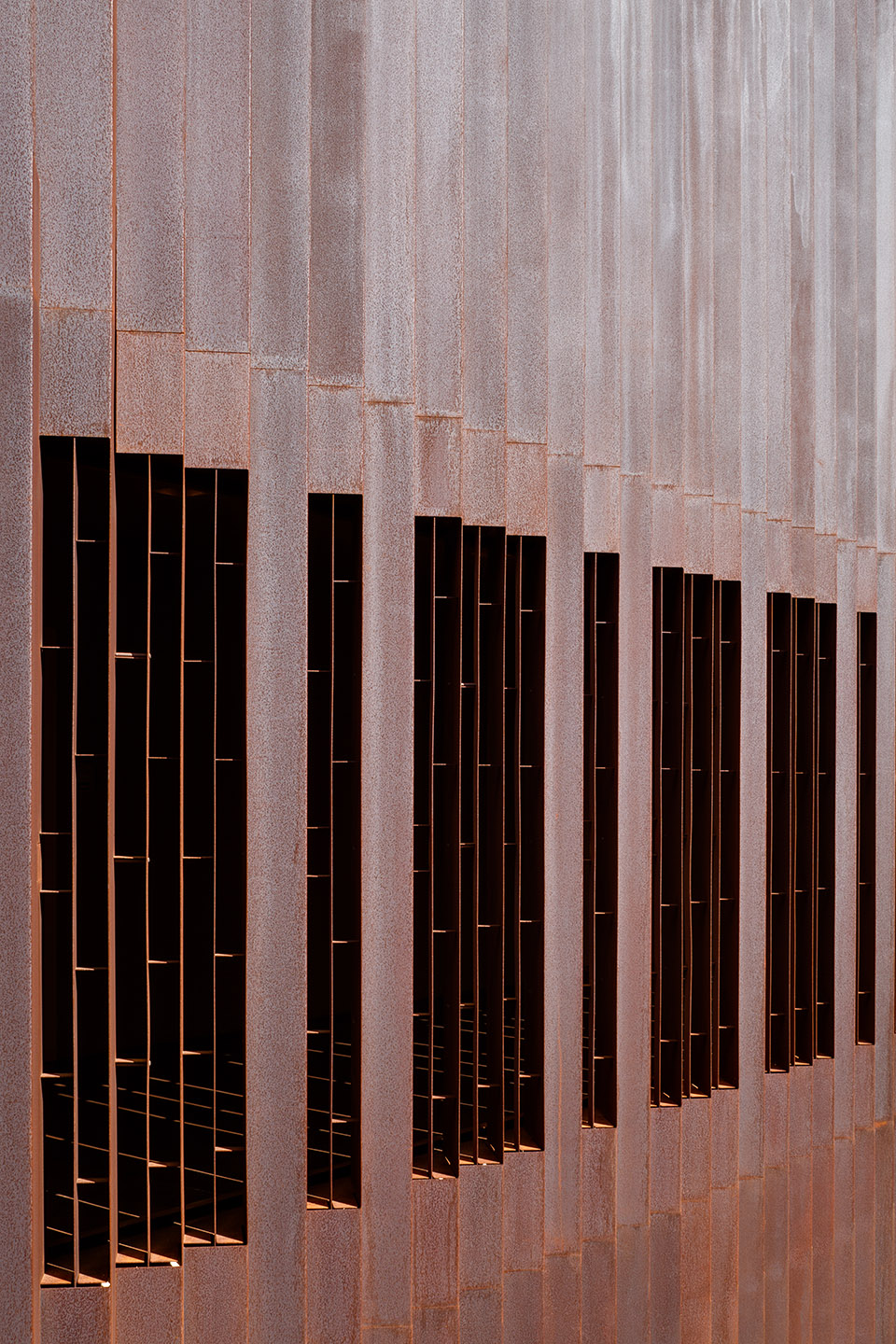
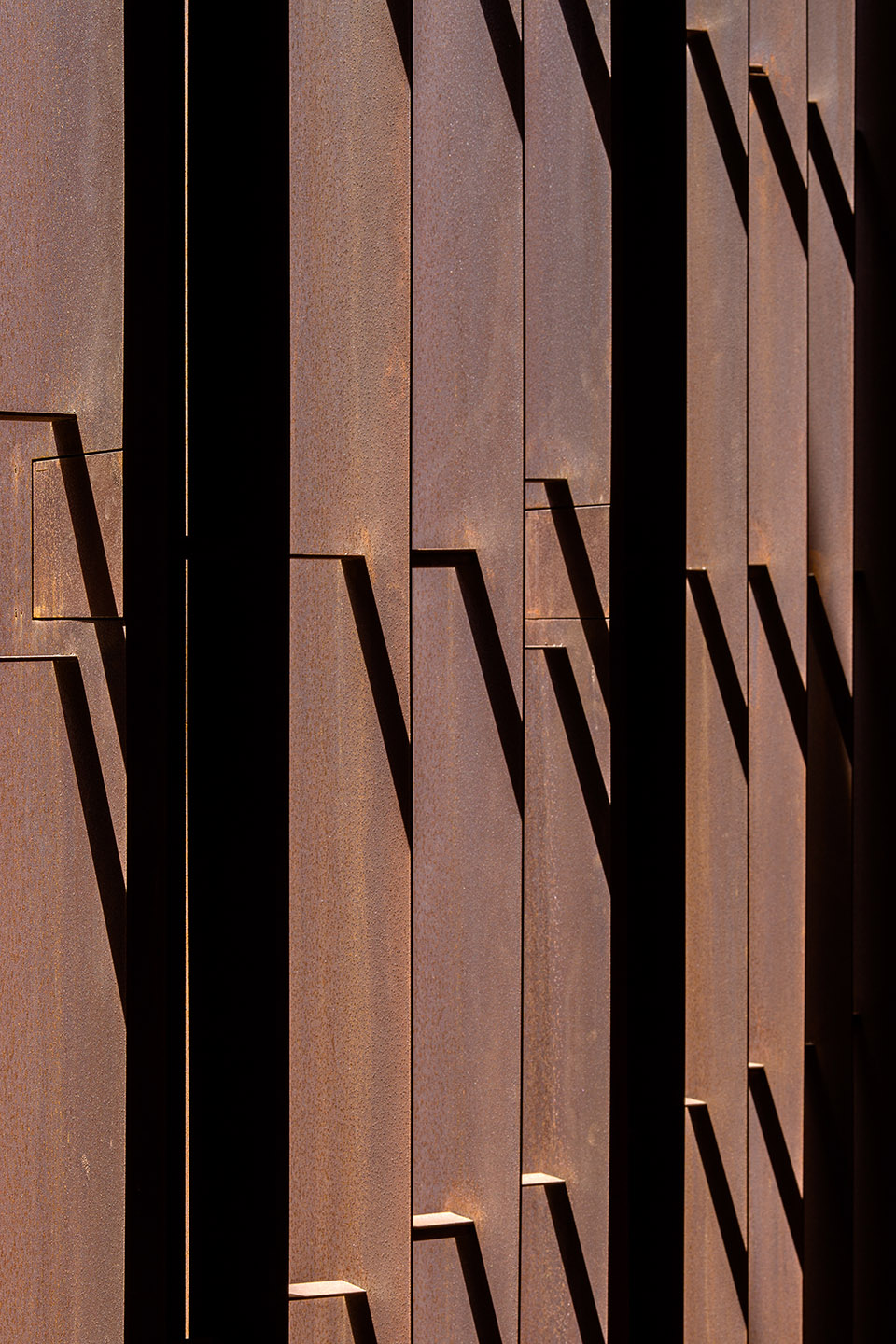
▼夜间视角,night view
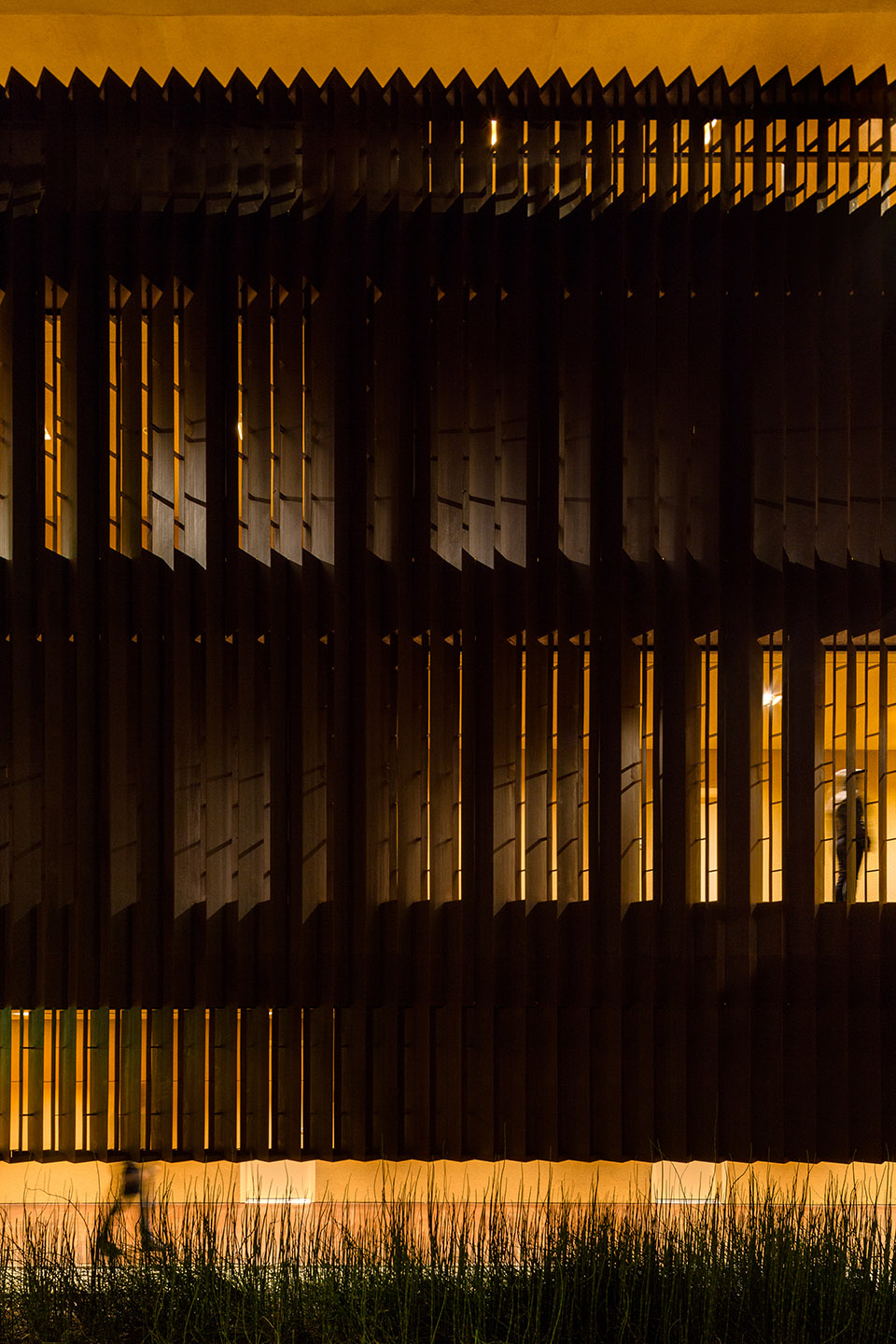
FRIDA ESCOBEDO HIGHLAND HALLS, GSB STANFORD UNIVERSITY PALO ALTO CA, USA 2016 ARCHITECT: FRIDA ESCOBEDO DESIGN TEAM: FEDERICA LOMBARDI PHOTOS: RAFAEL GAMO
